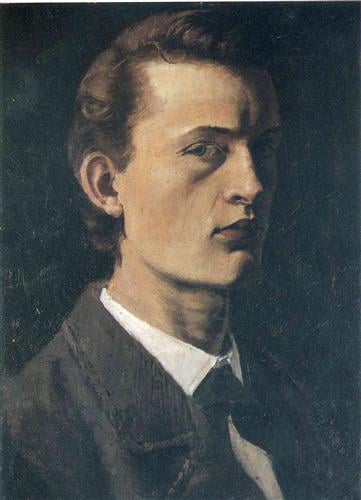Painted in 1893, The Scream is Munch’s most famous work and is generally regarded as a precursor to the Expressionist art movement. The instantly recognizable composition is both instantly striking and lastingly haunting, capturing as it does an intense emotional experience. The now iconic androgynous figure in the foreground is seemingly swept up in the same distortion that affects the landscape. This creates the impression that the whole scene pulsates with agitation and energy, in keeping with Munch’s intention to depict a subject’s personal experience of the world around them.
Visual & Decorative Arts Blog
Topics: Edvard Munch, expressionism
Art in the twentieth century, like the social environment in which it was produced, underwent a process of constant and rapid change. Painting in Europe no longer had to represent external reality through a series of pictorial conventions – historical events could be accurately recorded instead through the newer media of photography and film. Changes in the structure of the art market, too, away from the grand public ‘Salons’ to a system of private galleries and collectors, meant that paintings could be smaller, more personal and more experimental. Artists could respond to the changing reality around them and could also aim to be ‘modern’: to produce paintings that were innovative and exciting, full of radical new effects and new meanings.
Topics: Edvard Munch, Vincent van Gogh, Modern Art, Art Movements
The Scream is Edvard Munch's most famous work of art. It is easily recognisable and eternally haunting. The figure at the centre opens its mouth in an almost audible scream of agony while colours swirl in the background. But what influenced Munch to create this masterpiece? With the upcoming release of our new book Edvard Munch: Masterpieces of Art, we take a look at Munch's life and the influences that led to the Scream.
Topics: Edvard Munch, Masterpieces of Art
Last Wednesday saw the return of the popular ‘Museum Selfie’ day, a Twitter project initiated last year by the group of Museum professionals behind the website CultureThemes. The hashtag ran rife, with people posing in front of famous paintings, re-sharing the altered Vermeer image, and making museum exhibits look desperate to take a picture of themselves. The craze of the selfie in recent years – ‘selfie’ was named Oxford Dictionary’s 2013 Word of the Year – highlights what could be described as an addiction to self-portraiture, and the enthusiasm for the ‘museum selfie’ in particular indicates a fundamental need or desire to acknowledge that self: for the photographer to become a part of the photo and exist within its created art. With the upcoming release of Flame Tree’s ‘Edvard Munch: Masterpieces of Art’, we thought we’d have a look at how Munch’s tormented and emotionally vibrant paintings depict the self, and how his emotions and experiences flavour as well as constitute the subject matter of his work
Topics: Edvard Munch, Masterpieces of Art







